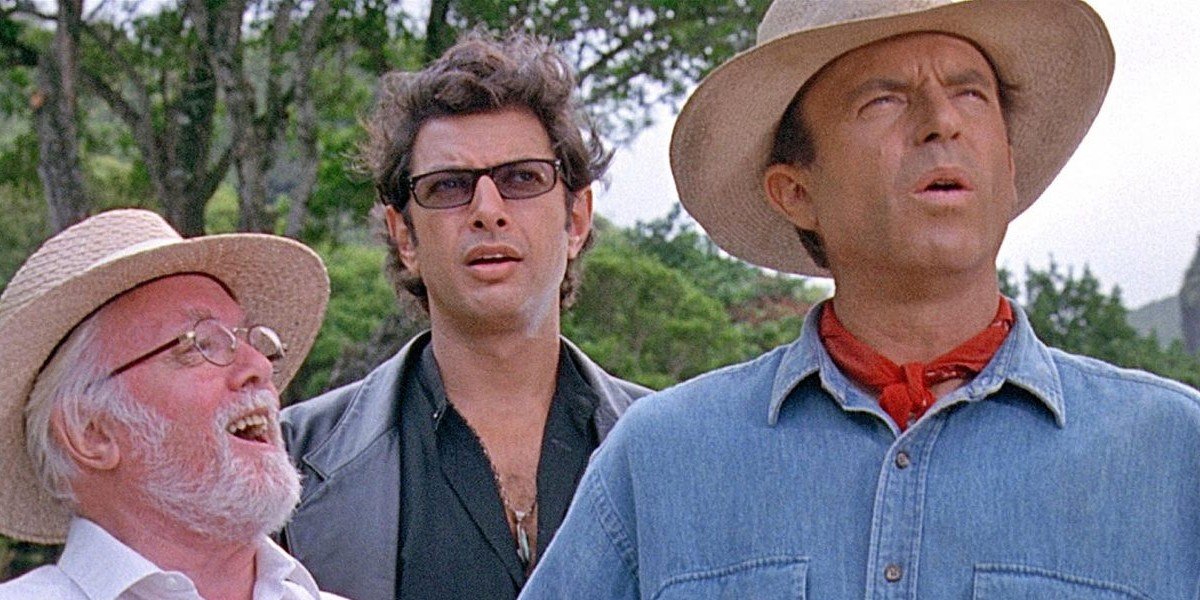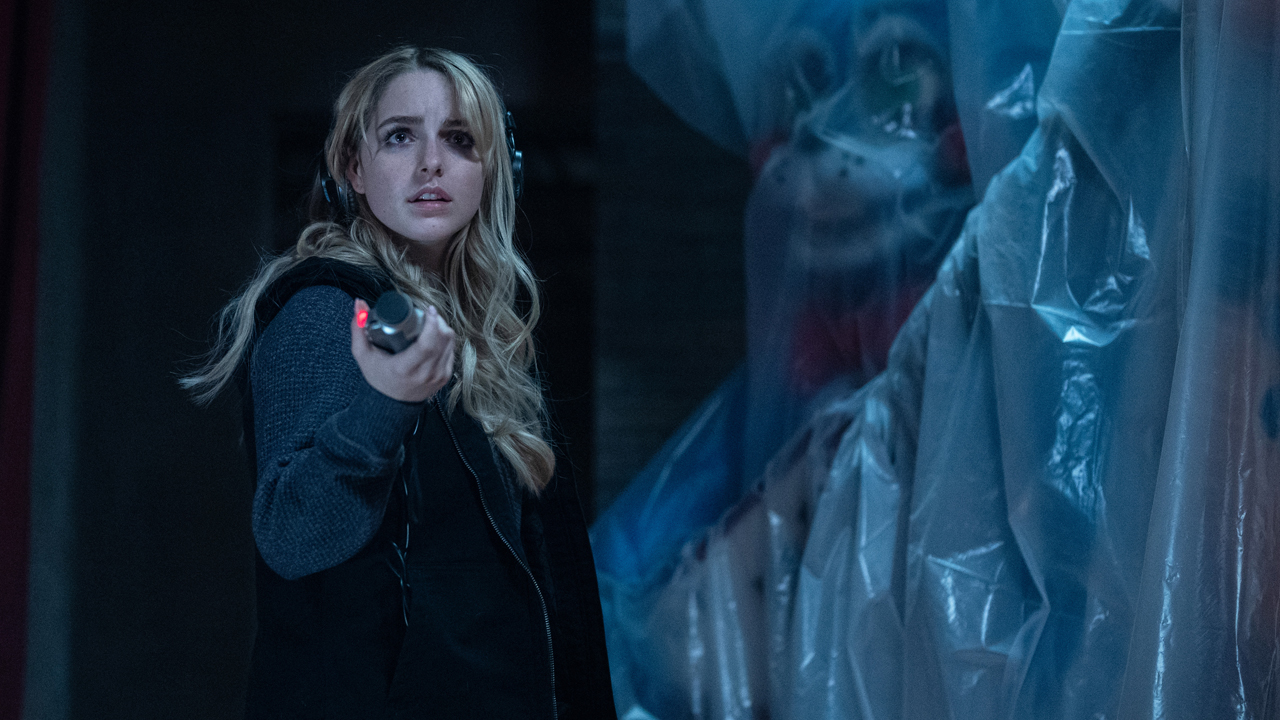How Timeline's Time Travel Works

Um, readers, I need to ask you a very important question: how long have I been gone? After that last excursion with Donnie Darko, I kind of lost track of time; and not in the usual way. Sure, the end of 2020 had things chaotic, but as if that wasn’t bad enough, I think I fell through another wormhole when all was said and done. Nevertheless, I’m back in the CinemaBlend labs, and it’s finally 2021! Surely once I’ve caught up on the news, the world will be healing, and everything will be coming up Milhouse. But before I read my emails and refresh myself on current events, it’s time to get back to our studies in time travel! And this latest adventure is a literary favorite of mine, as we’ll be discussing the film adaptation of Michael Crichton’s Timeline, starring the late great Paul Walker, and a bunch of other familiar faces you’ll be surprised to see in 2003!
It’s time at last to celebrate our first journey in 2021, taking us from here to there in the then and now. As always, before we change into period appropriate garb, don our return markers, and set off for medieval times, I’d like to remind you all that there’s plenty more time travel dissections you can read from the CinemaBlend archives. Of course, that’s business you can attend to after we complete the business at hand. So let’s get to roamin’ through some quantum foam’n, as Timeline sends us to the distant past of 2003… and beyond!
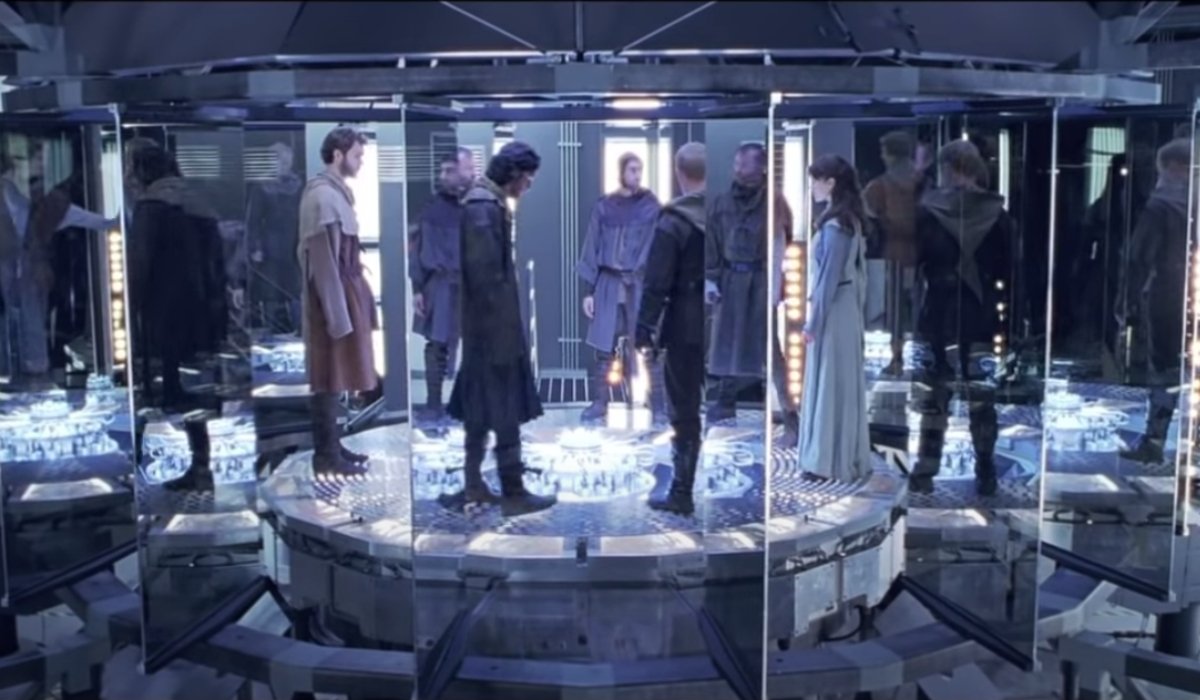
The Time Travel In Timeline
When the ITC Corporation set out to perfect Star Trek style technology, they accidentally discovered a very specific wormhole in the space-time continuum that operates on some very Trek-y logic. As a result, president Robert Doniger (David Thewlis) and vice-president Steven Kramer (Matt Craven) found themselves with a rather unique opportunity to experiment with time travel, and in the process help an archeological team discover the history that they were sending people back to. Of course, human greed and inherent glitches ruined the fun real quick, because Timeline is, after all, a Michael Crichton adventure.
Who's Time Traveling
In the specific instance of Timeline’s plot critical events, we first see Professor Edward Johnston (Billy Connolly) traveling back in time. But then, in order to rescue the professor from a trip gone horribly wrong, a team is sent back to retrieve him. That team is made up of his son Chris (Paul Walker), his research assistants Kate (Frances O’Connor), André (Gerard Butler), and François (Rossif Sutherland), as well as some ITC muscle lead by Frank Gordon (Neal McDonough).
From When To When
Due to the specific nature of Timeline’s time travel exercise, all trips made from ITC’s “Present Day” laboratory in Silver City, New Mexico span between two fixed points in time. The contemporary milestone of 2003 is directly connected to 1357 Castlegard, a village outside of Dordogne, France – right in the thick of the Hundred Year War.
Your Daily Blend of Entertainment News
The Purpose Of Their Trip
As Professor Johnston is suspicious of ITC’s ability to tip him off to continuously rich excavation sites, his trip to confront Robert Doniger turns into an excursion into the past. This then prompts Chris and his friends on his father’s team to go back in time to find his missing father, but unlocks an entire can of worms. Eventually the team has to ensure that the battle at Castlegard proceeds as history dictates, which includes the death of Lady Claire (Anna Friel), sister to Lord Arnaud (Lambert Wilson), who is currently engaged in a war with Lord Oliver (Michael Sheen).
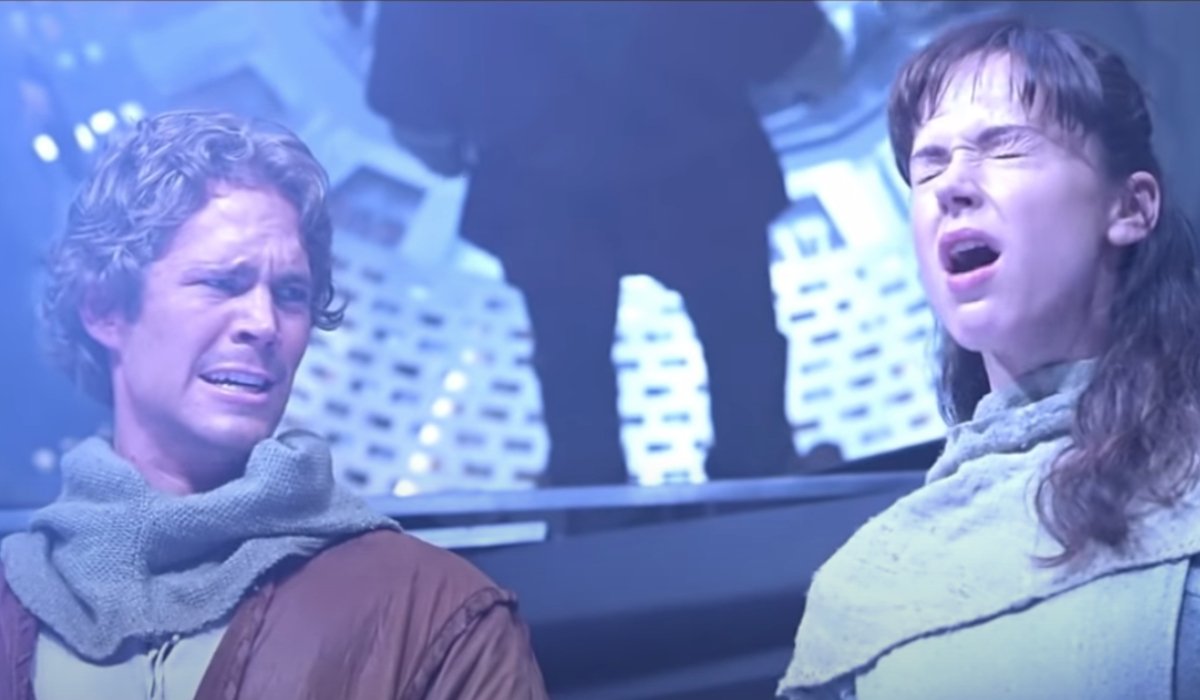
How Time Travel Happens In Timeline
Who’s ready for some basic level, Crichton-style science? Timeline takes the huge concept of the 1999 source material and boils it down to big ticket blockbuster tier rationale. That’s not to say it isn’t still intriguing, but when you push the brilliant concepts of an outside of the box thinker into something that scratches the surface, it’s a little sad for fans of the late author’s work.
So how does this version of time travel work? Well, Timeline’s method takes the DNA data of a person, or group of people, breaks it down in one location, and transmits it to another location for reassembly. It’s explained as a “human fax machine,” which is in essence what teleportation as we know it has always been. Putting aside the metaphysical question of whether you’re still you if you’ve been broken down, transmitted, and reassembled somewhere else, that’s the nuts and bolts of what this story does. Oh, and it induces an intense, yet fleeting amount of pain during the transmission process.
As to why 1357 Castlegard is the only place that Timeline’s travelers can go to, or how strong that connection is, even those behind ITC’s usage of the technology simply don’t know the answers. All that we’re told is that this time travel tech is a fax machine-style chamber that uses a wormhole like a fiber-optic cable to transmit things from one end to the other. The exact strength of this wormhole is unknown, and there’s only one way to take the return trip home.
Each participant that travels Timeline’s quantum corridor wears what’s called “a marker.” Designed to look like a pendant you wear around your neck, it has a 6 hour battery life, and is absolutely crucial to returning home, as they’re the force that’s holding this exact wormhole in place. If your marker dies, or if the machine back home suffers a bit of a mishap with a live grenade that shouldn’t have made the trip in the first place, you’re boned. To go home, a traveler must merely squeeze the marker, and to check how much time is left on their battery, they just have to toggle a button embedded in said marker with their thumbnail.
So long as there’s enough power running through the machine at home, and the signal to bring people back home is at least 80% strong, a return trip can be made. But if you travel without a marker, like poor Robert Doniger did in the final moments of Timeline, then you’re done for. Especially if you materialize in the middle of a gigantic castle battle; something you’d think the man who bears a striking resemblance to Professor Remus Lupin would have been able to foresee.
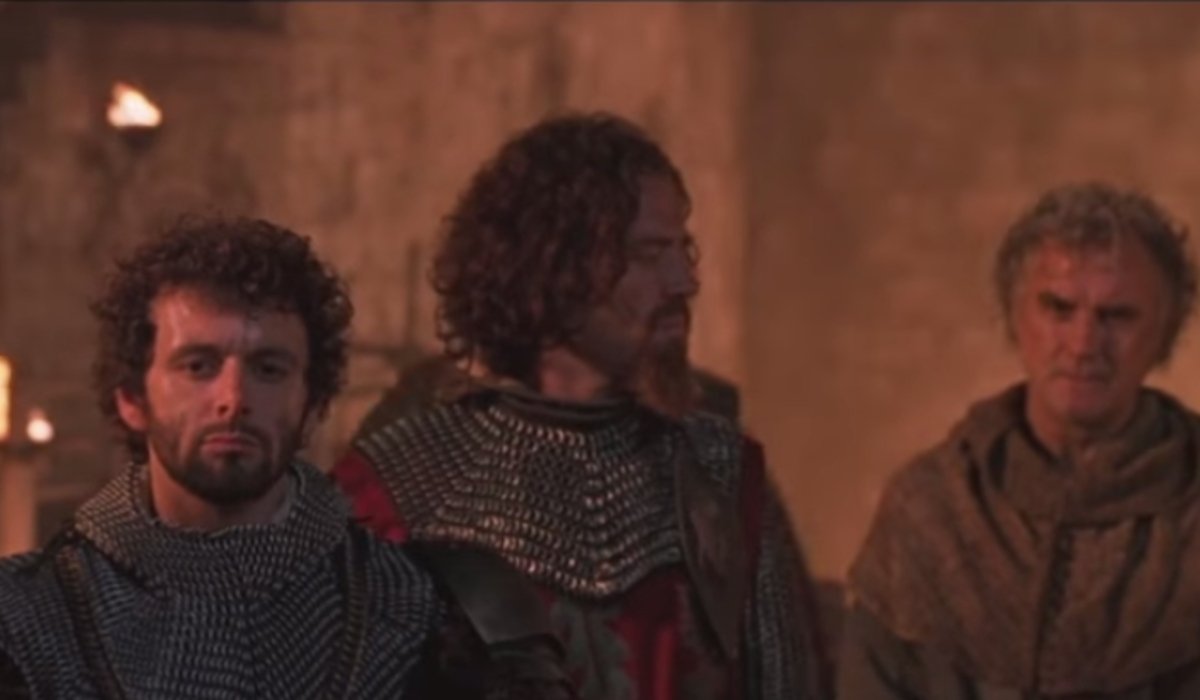
Can History Be Changed As A Result Of Time Travel In Timeline?
Technically, Timeline could be considered a closed loop of causality, due to the intent to preserve the events of 1357 Castlegard as they historically occurred. But even in this loop, we are told that history basically changed the moment Andre Marek saved, and eventually fell in love with Lady Claire. In a truly Back to the Future style twist, we see Marek fulfill a prophecy of sorts, as he learns during the huge third act battle that the knight he discovered entombed with Lady Claire was himself.
However, according to the lore of Timeline’s battle at Castlegard, Lady Claire’s death was supposed to be the event that pushes her brother Lord Arnaud and the French forces to rally their forces, and eventually win. In the version of events we see take place during 1357, it’s Chris and Kate’s knowledge of the tunnel system underneath Lord Oliver’s monastery stronghold that saves the day. Allowing Lord Arnaud and his forces to infiltrate and attack their villain’s lair, the French lord wins the battle by killing his English foe.
Of course, this new series of events in Timeline could have balanced out the potential changes that arose from another player on the board. When Professor Johnston was sent back, he ran into a disgruntled ITC employee by the name of William Decker (Marton Csokas.) Since Mr. Decker was a frequent flyer on the quantum corridor that ITC built, he was subject to the “transcription errors” the man we encounter in the opening had suffered. Insinuating himself with Lord Oliver’s forces, he becomes his aide de campe, under the alias “Sir William De Kere.”
Decker swears that he can get Professor Johnston to deliver Lord Oliver the weapons of unquenchable Greek fire, which would give the English a severe advantage against the French. His purpose for such devious means is the fact that he wants to carry out revenge against ITC through living well in 1357, and screwing with Timeline’s history; all because he was never warned that too many trips would prevent him from returning home alive past the point of no return.
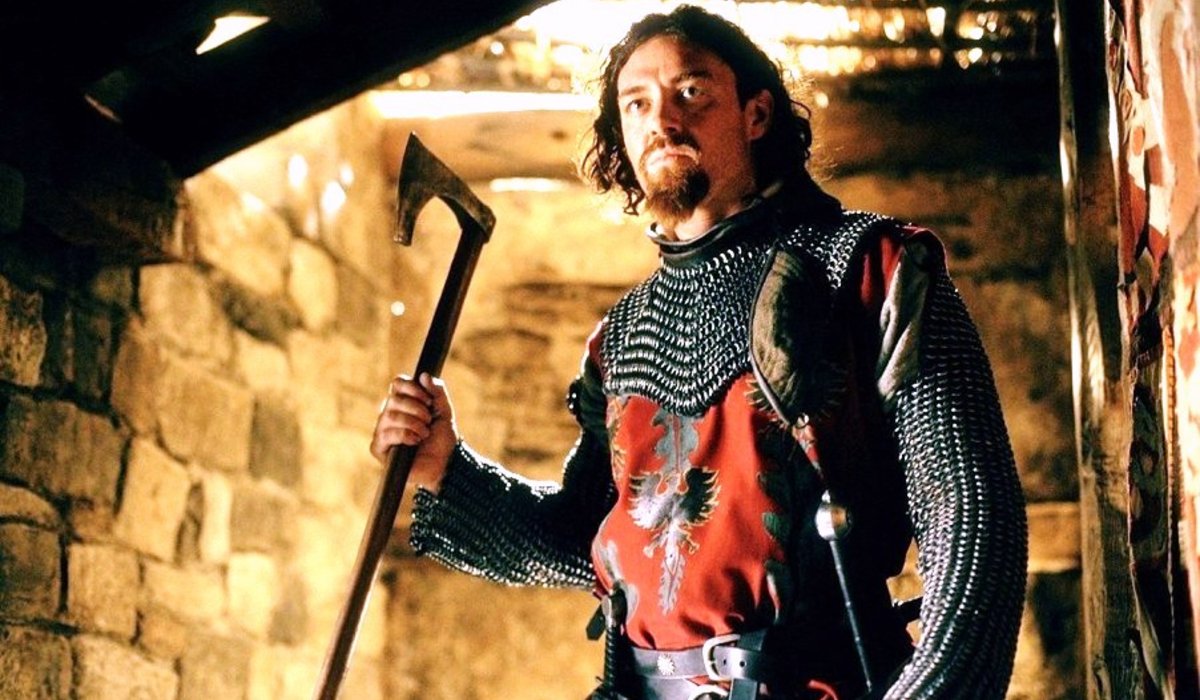
What Are The Consequences Of Time Travel In Timeline?
Timeline has a rather unique position when it comes to the consequences of time travel. Not only does the film somewhat acknowledge the fact that trips back in time can lead to historical consequences, but there are also some rather nasty physical side effects that are a part of ITC’s little science project. You thought Looper was harsh with how it hurt people, get a load of this.
The Physical Consequences Of Time Travel In Timeline
The greatest consequences of Timeline’s time travel are seen in physical manifestations. As the time travel process works on the principal of a “human fax machine,” there’s a tendency for transcription errors to crop up. We see this not only in the opening sequence where a random ITC employee is diagnosed with these errors, but also in the story of William Decker’s physical degeneration. Veins, organs, even bones start to misalign, as the more times a person travels through the quantum corridor, the more their DNA profile degrades.
The Historical Consequences Of Time Travel In Timeline
As far as historical consequences go, Timeline is a firm example of solving the equation with the wrong formula, but getting the right answer. While Lady Claire’s life is spared, Chris and Kate’s quick thinking lead to Lord Oliver’s defeat, and Lord Arnaud’s continued success. So while the battle is won, the good Lady gets to survive. Which leads to the greatest consequence of the time travel on display: love.
While Marek loses an ear, he gains a romance with Lady Claire, and stays behind in 1357. Fulfilling the prophecy of being buried with his lady love, the inscription on Andre and Claire’s tomb lays out their life as spouses and parents, allowing the archeologist to live in the time period he favored. Plus, what looked like a non-starter of a romance with Chris and Kate turned into a beautiful victory, thanks to their work in saving the day in Timeline. Truly a match made in history, and in the rich world of Michael Crichton’s imagination, which is a force we may see a lot more of in the near future.
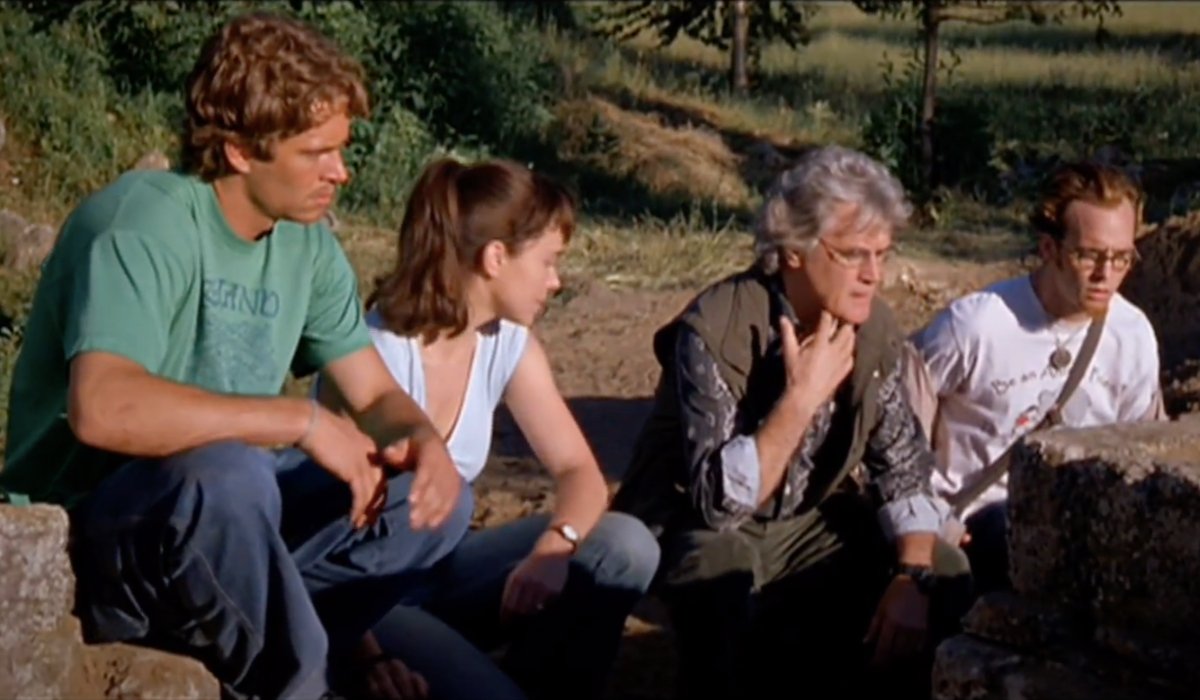
Victory For Us
Congratulations! By reading this, you’ve become a Quantum Wormhole Specialist; or, at the very least, Hollywood’s impression of one. Also, you’ve learned that any movie that forces Gerard Butler to cut his hair and adopt an American accent is a hate crime, and Hollywood needs to let Gerry be Gerry. Clearly, we’re off to a good start with the fun and learning in 2021, and we’re going to keep the party going with our next title!
Next up, we're going to honor a 20th anniversary that we should have gotten around to in December. But then again, this is a time travel lab, so we're technically able to send ourselves back into the past to prevent the future. Though hopefully we have more luck than Bruce Willis did, as 12 Monkeys is about to be released from its historical cage and examined with our watchful eyes. Until then, keep a tab open to CinemaBlend, as there’s no telling what’ll make its way through that quantum foam and onto your screen.

Mike Reyes is the Senior Movie Contributor at CinemaBlend, though that title’s more of a guideline really. Passionate about entertainment since grade school, the movies have always held a special place in his life, which explains his current occupation. Mike graduated from Drew University with a Bachelor’s Degree in Political Science, but swore off of running for public office a long time ago. Mike's expertise ranges from James Bond to everything Alita, making for a brilliantly eclectic resume. He fights for the user.
